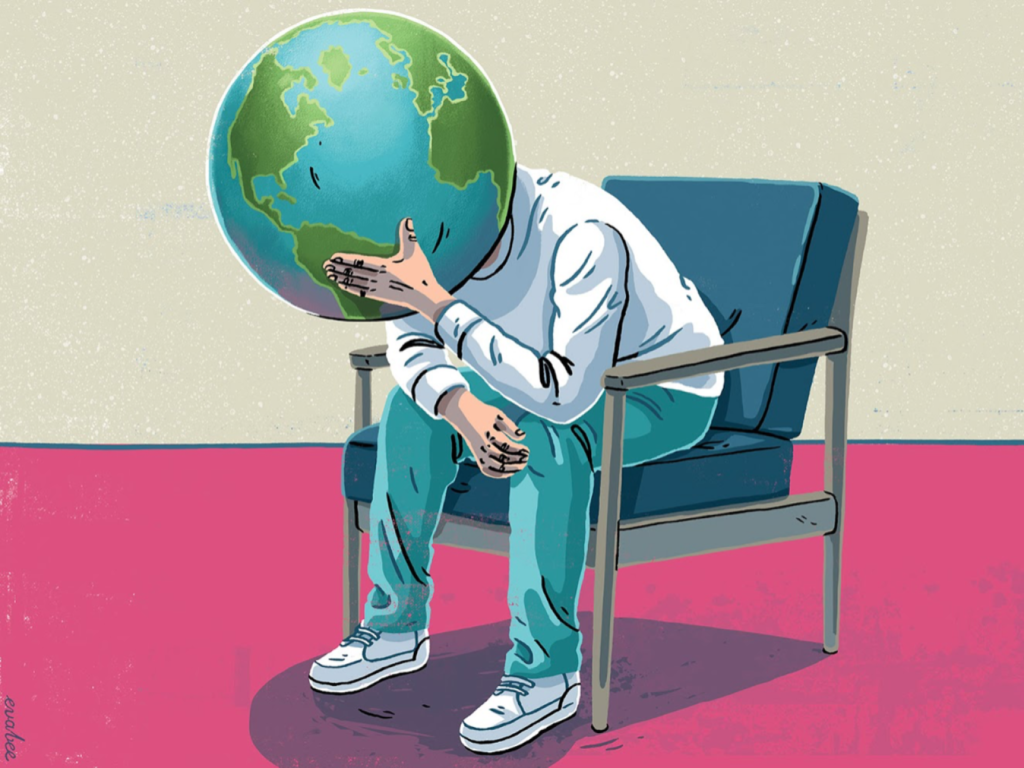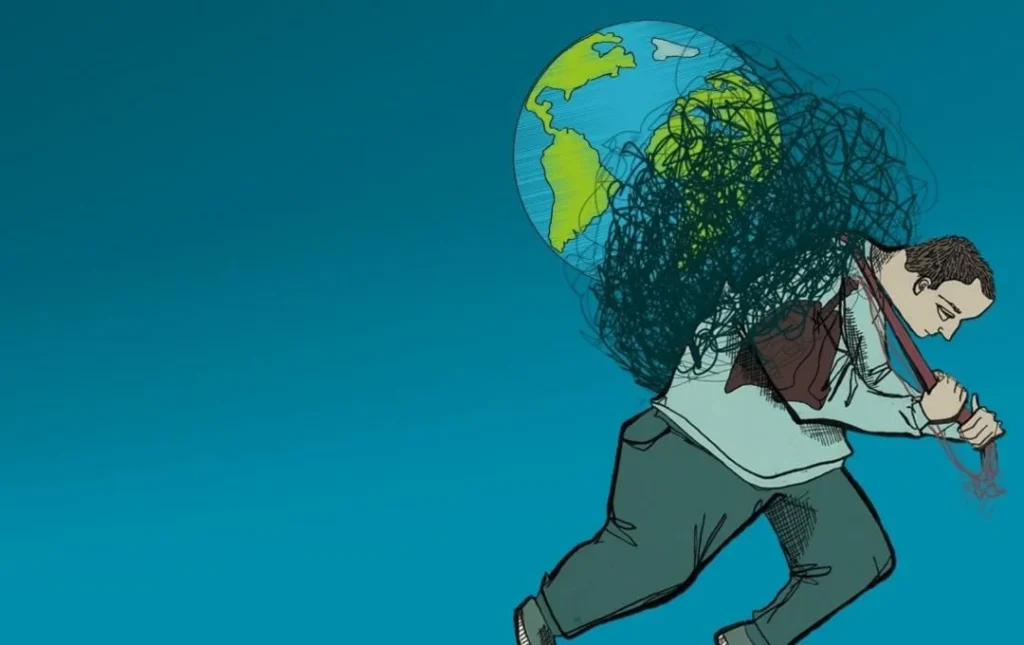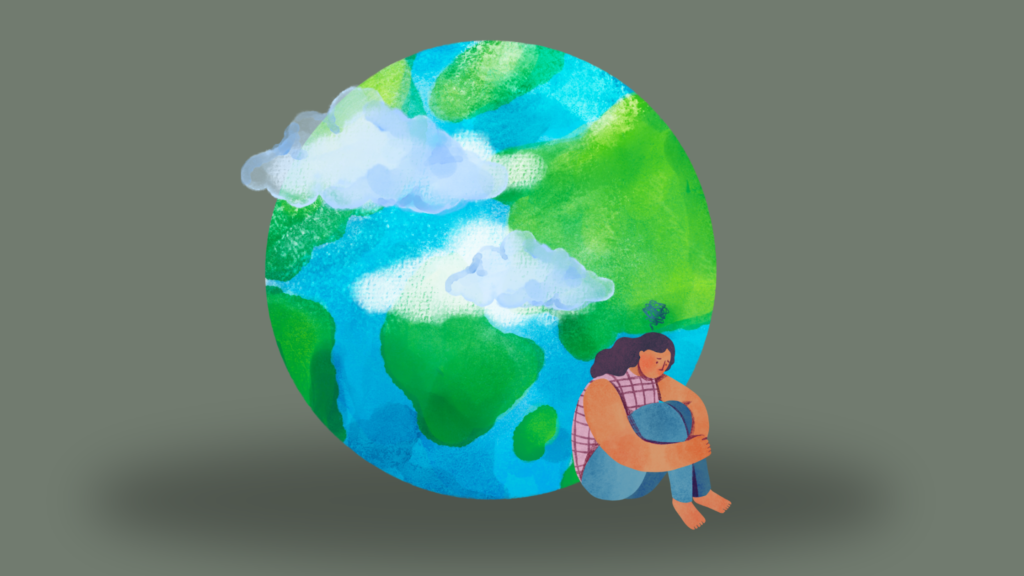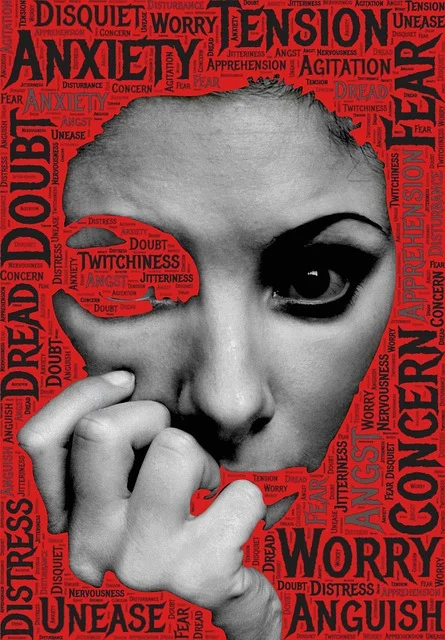Introduction
Climate change is not only reshaping landscapes and ecosystems—it is reshaping our inner worlds too. As wildfires rage, seas rise, and species vanish, people around the globe are experiencing a psychological phenomenon known as eco-anxiety.

Unlike generalized anxiety, eco-anxiety stems from concern for the environment and the future of life on Earth. It is fueled by real-world evidence: hotter summers, polluted air, climate-related disasters, and alarming scientific predictions. For many, this anxiety is not abstract—it is deeply personal. Parents worry about their children’s future, students wonder whether to have families, and communities already on the frontlines of climate change fear displacement.
This article explores eco-anxiety in depth: what it means, its symptoms, why it is becoming so common, and how individuals and communities can cope. Most importantly, it offers strategies for finding hope and resilience amid global uncertainty.
What Does Eco-Anxiety Mean?
Eco-anxiety is often described as the “chronic fear of environmental doom.” It reflects emotional, cognitive, and sometimes physical reactions to the climate crisis. Unlike many psychological concerns, eco-anxiety is not irrational. It is a reasonable response to the reality of environmental decline.
Defining Eco-Anxiety
- Core meaning: Persistent feelings of fear, guilt, or helplessness related to climate change and ecological destruction.
- Not a disorder: Eco-anxiety is not formally recognized in diagnostic manuals like the DSM-5, but psychologists acknowledge it as a valid emotional experience.
- Unique dimension: It differs from personal anxiety in that the threat is planetary and generational, rather than immediate and individual.
Examples in Daily Life
- A teenager avoids thinking about their future because they doubt the planet will be stable in 30 years.
- A young couple postpones having children out of fear of raising them in a collapsing environment.
- An environmental activist feels overwhelming guilt when buying products with plastic packaging.
Eco-anxiety captures both fear of loss (what we might lose in the future) and grief for what is already lost (species, forests, coral reefs).
Causes of Eco-Anxiety
Eco-anxiety arises from a combination of external factors, like environmental disasters, and internal factors, like personal guilt or responsibility.

1. Media Exposure
- Daily images of melting glaciers, droughts, and deforestation create a sense of urgency.
- Constant “doomscrolling” reinforces the idea that things are spiraling out of control.
2. Personal Experience
- Communities hit by hurricanes, wildfires, or floods often report higher eco-anxiety.
- People in rural areas dependent on farming or fishing may feel more vulnerable.
3. Guilt and Responsibility
- Many individuals struggle with eco-guilt, wondering if their choices—driving a car, using plastic, traveling by plane—are worsening the crisis.
- This sense of responsibility can create a cycle of anxiety and self-blame.
4. Generational Concerns
- Surveys show younger people are more affected, with over 60% of Gen Z reporting high levels of eco-anxiety.
- Children often express sadness and frustration at feeling powerless compared to governments and corporations.
5. Cultural & Economic Context
- In wealthier nations, people may experience “choice guilt” about lifestyle habits.
- In developing nations, eco-anxiety may stem from real threats to food security, housing, or survival.
Symptoms of Eco-Anxiety
Eco-anxiety can manifest differently across individuals, but its symptoms often mirror other forms of chronic stress.
Emotional Symptoms
- Persistent worry about environmental collapse.
- Sadness, grief, or mourning for damaged ecosystems.
- Anger or frustration at political inaction.
Cognitive Symptoms
- Racing thoughts about the future.
- Difficulty concentrating due to environmental worry.
- Catastrophic thinking (imagining worst-case scenarios).
Physical Symptoms
- Headaches and muscle tension.
- Fatigue and sleep disturbances.
- Stomach issues tied to chronic stress.
Behavioral Symptoms
- Avoidance: Some people tune out all climate news.
- Obsession: Others compulsively follow every environmental update.
- Over-preparation: Stockpiling resources or making extreme lifestyle changes.
Case Example
Sarah, a 28-year-old student, began waking up at night with panic attacks after reading about mass coral reef die-offs. She described feeling like the future was “already stolen.” Therapy helped her shift from despair to action by joining a local beach-cleaning initiative, which gave her a sense of agency.
How Common is Eco-Anxiety?
Eco-anxiety is not confined to a small group—it is a widespread emotional experience.

- Youth statistics: A global study of 10,000 young people found that 59% were extremely worried about climate change, and 45% said it affected their daily life and functioning.
- Regional prevalence: Eco-anxiety is more pronounced in areas with recent disasters (wildfires in California, floods in Pakistan, droughts in Africa).
- Activists: People who work in environmental movements often experience “activist burnout,” a mix of exhaustion, grief, and anxiety.
Why It’s Growing
Eco-anxiety grows as climate change accelerates. Unlike other threats, it has no clear end date. The open-ended uncertainty contributes to its persistence.
Impact of Eco-Anxiety on Daily Life
Eco-anxiety doesn’t just stay in the background—it often shapes decisions, relationships, and personal identity.
1. Mental Health
- Increases risk of depression and generalized anxiety.
- Can create feelings of hopelessness and existential dread.
2. Social Relationships
- Can strain families where members disagree about climate urgency.
- Young people sometimes feel misunderstood by older generations.
3. Education and Career
- Some students choose careers in sustainability or activism.
- Others feel paralyzed, doubting whether their education matters in a “collapsing world.”
4. Lifestyle Adjustments
- Many adopt eco-friendly diets, reduce waste, or avoid flights.
- While positive, these changes can bring guilt if people feel they’re “not doing enough.”
How to Manage Your Eco-Anxiety?
Managing eco-anxiety is about finding balance between concern and hope.
1. Practice Mindfulness
- Meditation, breathing exercises, and journaling calm anxious thoughts.
- Grounding exercises (like the 5-4-3-2-1 technique) bring focus back to the present.
2. Limit News Consumption
- Choose a set time to check updates instead of scrolling endlessly.
- Follow sources that highlight solutions, not just problems.
3. Transform Anxiety into Action
- Join local clean-ups, plant trees, or advocate for policies.
- Taking small but consistent action builds a sense of control.
4. Build Community
- Join eco-support groups or online communities.
- Talking with others normalizes the experience and reduces isolation.
5. Reconnect with Nature
- Spending time in parks, forests, or near water has proven calming effects.
- Direct contact with nature fosters hope and a sense of purpose.
What is the Treatment for Eco-Anxiety?
When eco-anxiety becomes overwhelming, professional help may be necessary.
Therapeutic Approaches
- Cognitive Behavioral Therapy (CBT): Helps restructure catastrophic thinking.
- Eco-Therapy/Nature Therapy: Involves healing through direct connection with nature.
- Group Therapy: Allows individuals to share fears and find collective strength.
Medication
- Not typically the first choice, but may help if eco-anxiety overlaps with depression or panic disorders.
Holistic Treatments
- Exercise, healthy diet, sleep, and creative outlets reduce stress.
- Spiritual or faith-based practices often provide a sense of meaning and resilience.
Preventing Eco-Anxiety in the Future
Prevention doesn’t mean ignoring reality, but rather building resilience alongside awareness.
- Education with Hope: Teach children about environmental challenges while also sharing success stories and solutions.
- Media Responsibility: Encourage balanced reporting that highlights innovation, like renewable energy breakthroughs.
- Community Resilience: Build networks where people can grieve together and take action collectively.
Conclusion
Eco-anxiety reflects the deep bond between humans and the Earth. It is a natural response to the real threats of climate change. But while the feelings of fear, grief, and uncertainty can be overwhelming, they can also be transformed into motivation and collective resilience.
Managing eco-anxiety involves acknowledging the fear, building emotional strength, connecting with supportive communities, and taking hopeful action. With awareness and strategies, eco-anxiety does not need to paralyze us—it can inspire meaningful change.
The climate crisis is daunting, but human capacity for resilience, creativity, and cooperation is equally powerful. Eco-anxiety is not the end of hope—it is the beginning of a call to protect the future.



